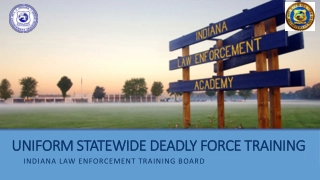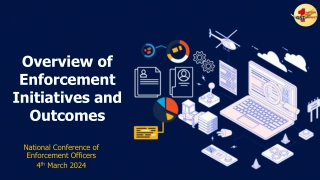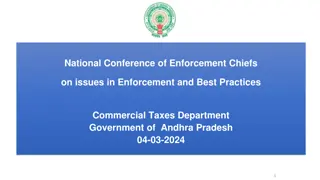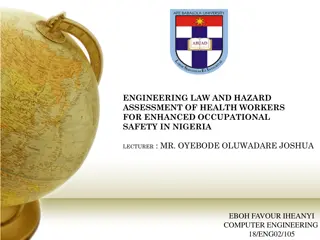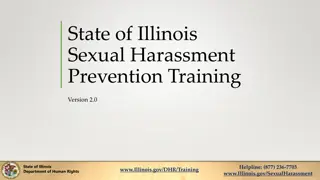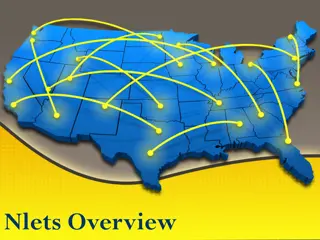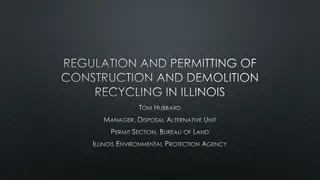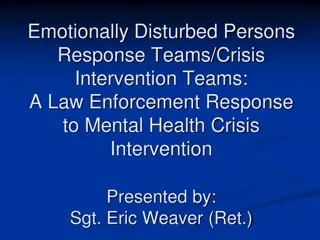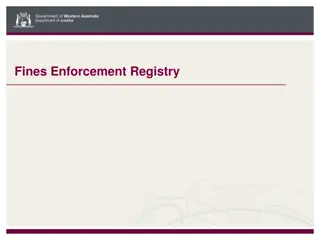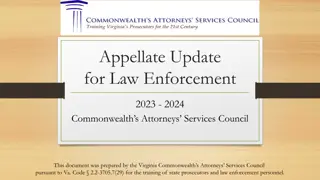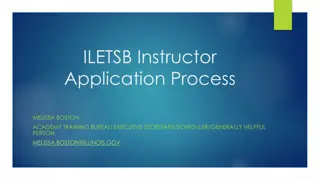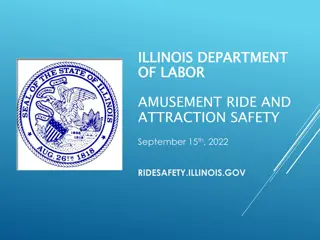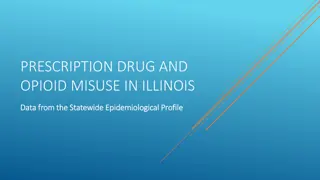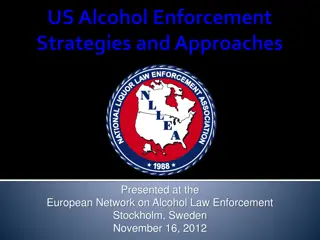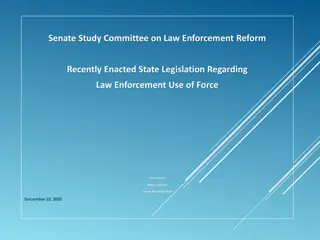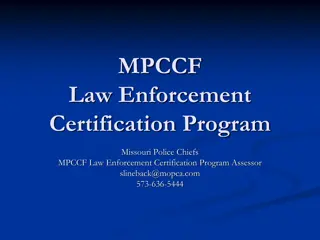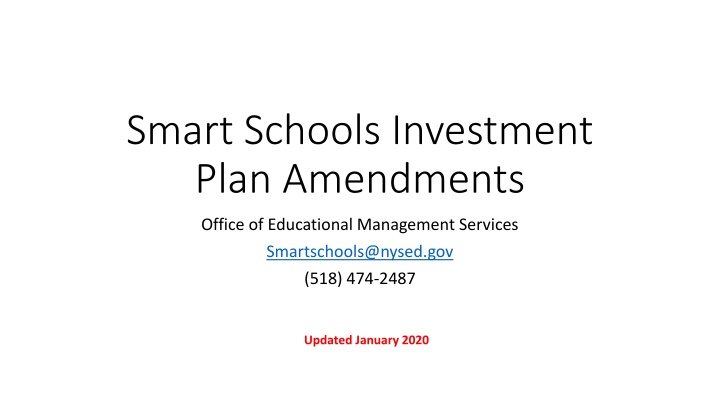
Illinois Law Enforcement Training and Standards Board Proposed Rules for Discretionary Decertification Hearings
The Illinois Law Enforcement Training and Standards Board has proposed rules for discretionary decertification hearings scheduled for October 2024. The rules outline violations that could lead to decertification, such as committing a felony or misdemeanor, excessive use of force, failure to intervene, tampering with cameras, and engaging in unprofessional conduct.
Download Presentation

Please find below an Image/Link to download the presentation.
The content on the website is provided AS IS for your information and personal use only. It may not be sold, licensed, or shared on other websites without obtaining consent from the author. If you encounter any issues during the download, it is possible that the publisher has removed the file from their server.
You are allowed to download the files provided on this website for personal or commercial use, subject to the condition that they are used lawfully. All files are the property of their respective owners.
The content on the website is provided AS IS for your information and personal use only. It may not be sold, licensed, or shared on other websites without obtaining consent from the author.
E N D
Presentation Transcript
Smart Schools Investment Plan Amendments Office of Educational Management Services Smartschools@nysed.gov (518) 474-2487 Updated January 2020
What is an Amendment to an SSIP? An amendment allows districts to account for necessary changes to an original approved Smart Schools Investment Plan due to price increases and/or decreases, removal of approved expenditures and/or addition of new expenditures. It is easiest if you print out a copy of the original SSIP for reference. *The district is not starting from scratch and redoing the approved SSIP, but rather identifying incremental changes to the approved SSIP, in a separate new SSIP Amendment.
Why would a district need an amendment? Changes in pricing to expenditures after the approval of the Smart Schools Investment Plan. Technology needs for the district have changed after the approval of the Smart Schools Investment Plan. During the bidding process, construction or after completion, there were changes to quantities of specific line items. District can add new items due to budget savings in other areas. The original approved SSIP had mistakes that require correction. Nonpublic schools submit final requests for technology loans.
What is the approval time for an amendment? Amendments are prioritized for a quicker approval time. Some smaller amendments can be approved internally by SED staff, depending on the types of changes and total budget change. Some more substantial amendments will require additional review and will need to be approved by the Review Board at their next meeting.
What is needed to complete an amendment? Access to the Smart Schools Investment Plan in the Business Portal. A copy of the original approved Smart Schools Investment Plan. A copy of the SSBA Letter of Intent filed with the Office of Facilities Planning (if applicable). Check with your project manager to make any necessary changes. A list of all necessary expenditure related changes from the original approved SSIP, including new items to request, items to be removed and/or price/quantity changes.
Steps to File an Amendment Steps to File an Amendment
Create a New Smart Schools Investment Plan Go into the Business Portal and create a new SSIP. Answer all required questions in the Overview. Overview Identifying label should be the title of original approved SSIP, with - Amendment 1 at the end. Consecutive amendments will be labeled Amendment 2, -Amendment 3, etc. Question 2 will be labeled as an Amended Submission. District should post updated SSIP information to website. This must be for a minimum of two weeks if the changes to the SSIP are more than 25%.
Questions in Categories Only categories that have changes to the expenditures will need to be visited and specific questions will need to be answered. In most circumstances, amendments do not require responses to all questions, only those specified below. Describe the need for amendment and what changes will be made. Include SUNY/CUNY contact information. Include project numbers and related questions. Include physical location and partner #. Include changes to expenditures Update category budgets. Question 9 Loanable Question 10 - Nonloanable Question 12 Loanable Question 13 - Nonloanable Question 3 Questions 6, 7 & 8 School Connectivity Question 1 Questions 4 & 5 Question 6 Question 7 Community Connectivity Question 5 Question 9, 9a, 9b, 9c Question 12 Question 14 Classroom Learning Technology Question 2 Question 4 Question 5 Question 6 Pre-Kindergarten Classrooms Question 1 Question 2 Question 4 Question 5 Transportable Classroom Units Question 1 Questions 2, 3 & 4 Question 5 Question 6 High-Tech Security
Non-Public Schools Category Districts that have nonpublic schools within their boundaries as of 2014-15 will have the new Non-Public Schools category included in their Survey Navigation. Any of these districts that are spending SSBA funds on technology that has been identified as loanable in School Connectivity and/or Classroom Learning Technology will need to account for plans to purchase and loan devices for nonpublic schools. Nonpublic loans are automatically calculated per plan. The district can find the total nonpublic loan amount on the final column of question 4. All questions in this category are required if there is a nonpublic loan.
Developing a Budget The budget for an amendment is only accounting for changes in the plan. Districts are not reworking the original approved budget, but rather demonstrating what changes to that budget are being made. Each expenditure line is demonstrating what changes are being made to the original approved line items. An amendment can have a negative budget if the district is putting funds back into the available allocation. Do not include expenditures that were approved in the original SSIP, but are unchanged.
If the quantity changed for an item, the quantity will be negative for a decrease or positive for an increase. It will only be the difference in what you were approved for to what you need, NOT the total. For example: The district found alternate funding and is removing video cameras from the original approved SSIP.
If the price changed for an item, the price will be negative for a decrease or positive for an increase. It will only be the difference in what you were approved for to what the actual cost was, NOT the final cost. For example: The price of Chromebooks decreased $45. The price of Interactive Displays increased $538.
If you are adding any items to the SSIP, they will have a new line item. If you are removing any items from the approved SSIP, you will have a negative quantity to remove the items. The district was originally approved for 10 Clear Touch 84 interactive whiteboards. They are removing these from their approved plan completely. Instead, the district is going a different direction with projectors and is adding the supplies required to the plan to replace the interactive whiteboards.
Calculating the Category Budget Calculate the budget for each subcategory listed. This can be a positive number or a negative number. Put the budget for each subcategory in the appropriate space. The system will generate a total when you save. $103,728
Checking the Overview: Question 13 This table is automatically calculated based off the expenditures and budgets that the district included in each category. Please review the total figures to ensure that the sub-allocations and expenditure totals for each category match. If there is a discrepancy, there will be a figure (either negative or positive) in the Difference column. The final budget should only have zeros in the Difference column.

